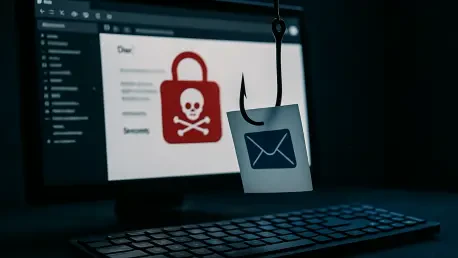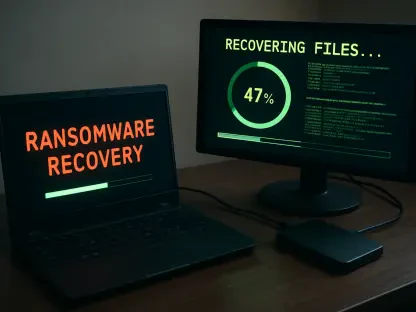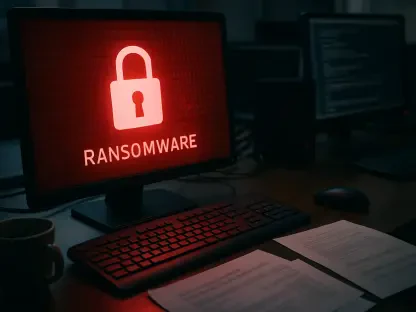Imagine a single deceptive email slipping through the cracks, compromising 18 widely-used software packages and threatening billions of downloads, a scenario that became reality in a recent cybersecurity breach within the npm ecosystem, a cornerstone of modern software development. On September 8, 2024, a developer fell victim to a phishing scam, exposing critical vulnerabilities in open-source supply chains, particularly those tied to cryptocurrency transactions. This roundup gathers diverse perspectives from security researchers, developers, and industry analysts to dissect how this attack unfolded, its far-reaching implications, and actionable strategies to prevent similar incidents. The goal is to provide a comprehensive overview of the event while equipping the community with practical insights to bolster defenses.
Diving into the Breach: What Happened and Why It Matters
This incident sent shockwaves through the developer community, spotlighting the fragility of software ecosystems that millions rely on daily. A phishing email from a fraudulent domain tricked the targeted developer into resetting two-factor authentication, granting attackers access to an npm account. This breach allowed malicious code to infiltrate 18 packages, some of which are integral to countless applications worldwide, highlighting the devastating potential of supply chain attacks.
The scale of the affected packages, with a collective two billion weekly downloads, underscores the gravity of such compromises. Industry observers emphasize that even a brief window of exposure can lead to widespread integration of tainted code into live systems. The consensus is clear: the npm platform, while invaluable, remains a prime target for cybercriminals seeking maximum impact through minimal effort.
Beyond the technical fallout, this event serves as a stark reminder of the human element in cybersecurity. Many experts point out that personal stress and distraction played a role in the developer’s lapse, amplifying the need for awareness alongside robust systems. This incident has sparked a broader conversation about balancing accessibility with security in open-source environments.
Expert Perspectives: How the Phishing Scam Succeeded
The Anatomy of Deception: Breaking Down the Attack
Security analysts have closely examined the phishing tactic used, noting the sophistication of the fraudulent email that mimicked official npm support. The deceptive domain exploited trust, bypassing even multi-layered defenses like two-factor authentication. Many in the field argue that such social engineering tactics are becoming increasingly refined, often tailored to exploit momentary lapses in judgment.
A recurring theme among researchers is the inadequacy of current authentication protocols against well-crafted scams. Some suggest that platforms must integrate more dynamic verification methods to counter these evolving threats. The incident has fueled debates on whether technology alone can safeguard accounts or if user education must take precedence in the fight against phishing.
Another viewpoint focuses on the attacker’s intent, with several experts agreeing that the targeting of high-impact packages was deliberate. This precision indicates a deep understanding of the npm ecosystem, raising concerns about insider knowledge or extensive reconnaissance. The takeaway for many is that developers must remain vigilant, scrutinizing every interaction for signs of deceit.
Malicious Code and Crypto Targets: Unpacking the Payload
The malicious code injected into the compromised packages was designed with a specific goal: to intercept cryptocurrency transactions in users’ browsers. Technical breakdowns by security professionals reveal how subtly the code operated, redirecting funds to attacker-controlled accounts without alerting users. This stealthy approach, according to many, exemplifies the growing complexity of supply chain attacks.
A significant concern raised by analysts is the sheer reach of the affected packages, which could have impacted countless applications during the exposure window. Even though mitigation occurred within hours, the possibility of lingering compromised versions in production environments remains a pressing issue. Some experts warn that delayed updates or unpatched systems could still harbor risks.
Differing opinions emerge on the effectiveness of rapid response measures. While some commend the swift action by npm security teams, others argue that the incomplete removal of certain tainted packages points to systemic challenges in purging malicious updates. This divide highlights the need for more streamlined processes to ensure total cleanup after breaches.
npm as a Cybercrime Hotspot: Why It’s Under Siege
Recent data reveals that 61% of crypto-related malicious campaigns in the current year are linked to npm, positioning it as a top target for cybercriminals. Industry reports frequently cited by analysts indicate that the platform’s dominance and high-download packages make it an attractive vector for large-scale attacks. This trend shows no sign of slowing, with projections of increased activity through 2025 and beyond.
Regional patterns also draw attention, with some researchers noting that certain attack origins correlate with specific cybercrime hubs. This geographic insight suggests a coordinated effort to exploit npm over other repositories like PyPI, which see fewer crypto-focused scams. Many in the security space stress that understanding these patterns could inform more targeted defenses.
A critical perspective questions the assumption that quick mitigation equates to safety. Several voices argue that the sophistication of attacks, often described as the most significant on npm to date, demands a reevaluation of response timelines and strategies. The consensus leans toward preemptive measures rather than relying solely on post-breach containment.
Human and Technical Gaps: What Enabled the Breach
The human factor in this incident garners significant discussion, with many pointing to the developer’s candid admission of distraction as a key enabler. Security professionals highlight that personal stressors can amplify vulnerability, even among seasoned individuals. This observation drives home the importance of fostering a culture of mindfulness alongside technical safeguards.
On the technical side, loopholes in account access mechanisms are under scrutiny. Experts note that while two-factor authentication offers a layer of protection, it remains fallible against determined social engineering. Some advocate for additional barriers, such as time-based or behavior-driven verification, to fortify account security.
Community-driven responses also feature prominently in discussions, with practical tools and detection methods gaining traction. Developers sharing scripts to identify compromised packages reflect a grassroots effort to mitigate risks. This collaborative spirit, many believe, could serve as a model for addressing both emotional and technical vulnerabilities in future incidents.
Safeguarding the Ecosystem: Tips and Strategies from the Community
Drawing from varied insights, a key lesson is the ease with which phishing can bypass defenses, urging developers to double-check email domains before acting. Several contributors recommend adopting stricter authentication settings, such as hardware-based keys, to add an extra shield against unauthorized access. This proactive step could deter even the most cunning scams.
Another widely endorsed strategy involves leveraging community-shared tools to detect malicious updates promptly. These resources, often circulated among developer forums, enable rapid identification of compromised packages before they infiltrate systems. Many stress that staying connected to such networks can provide real-time alerts and solutions.
Finally, routine security audits of personal accounts and contributions emerge as a critical practice. Experts advise setting reminders to review access logs and permissions, ensuring no suspicious activity goes unnoticed. This habit, combined with ongoing education on emerging threats, equips individuals to navigate the npm landscape with heightened caution.
Reflecting on the Incident: Steps Forward for Open-Source Security
Looking back, this phishing attack on npm stood as a pivotal moment that exposed deep-seated vulnerabilities in software supply chains. It revealed how even brief lapses could jeopardize billions of downloads, impacting developers and end-users alike. The collective insights from security analysts and community members painted a sobering picture of the challenges faced.
Moving forward, the focus must shift to implementing layered defenses, from enhanced authentication protocols to widespread adoption of detection tools. Encouraging developers to prioritize regular training on phishing tactics could further reduce human error. Exploring industry-wide collaborations to standardize rapid response frameworks also emerged as a vital consideration, ensuring that future breaches are contained with greater efficiency.









